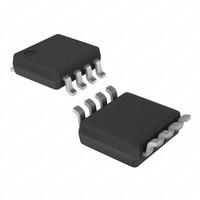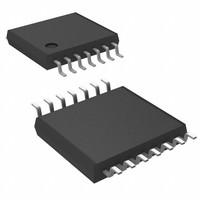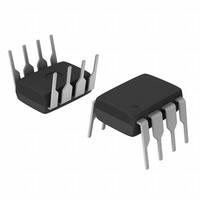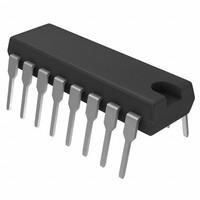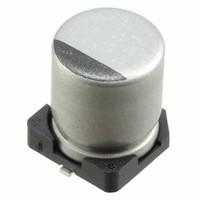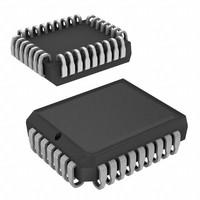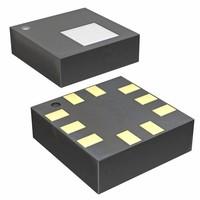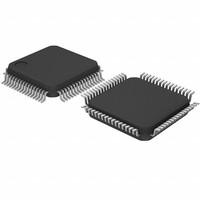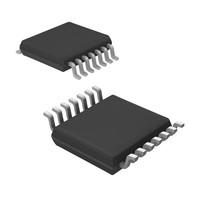
PMIC Selection and Design Considerations
yunying Release time:2024-05-08 Page View:524

Let's Explore the factors to consider when selecting a PMIC for a specific application, including voltage regulation, power efficiency, thermal management, and integration with other components.
Power Management Integrated Circuits (PMICs) play a crucial role in modern electronic devices, offering efficient and reliable power delivery to various components. Selecting the right PMIC and considering the design aspects are essential for ensuring optimal performance, power efficiency, and system reliability. In this article, we will delve into the intricacies of PMIC selection and explore the key design considerations that engineers need to take into account when integrating PMICs into their designs.
Understanding PMICs
Before diving into the selection process, it's important to have a solid understanding of what PMICs are and their significance. What is PMIC? A PMIC is an integrated circuit that combines multiple power management functions into a single chip, simplifying the design and reducing the overall footprint. These functions include voltage regulation, power conversion, battery charging, power sequencing, and more. PMICs are widely used in a variety of applications, ranging from smartphones and tablets to IoT devices and automotive systems.
PMIC Classification
PMICs (Power Management Integrated Circuits) can be classified into various categories based on their functionality, application, and power management features. Here are some common classifications of PMICs:
1. Voltage Regulators:
- Linear Regulators: These PMICs provide a constant output voltage and are suitable for low-current applications.
- Switching Regulators: These PMICs use switching techniques to regulate the output voltage efficiently and are ideal for high-current applications. They include buck converters, boost converters, and buck-boost converters.
2. Battery Management PMICs:
- Battery Chargers: These PMICs handle the charging process for rechargeable batteries, providing features like constant voltage, constant current, and thermal regulation.
- Fuel Gauge ICs: These PMICs monitor and estimate the state-of-charge (SoC) and state-of-health (SoH) of a battery. They provide information about battery capacity, voltage, current, and temperature.
- Battery Protection ICs: These PMICs protect batteries from overvoltage, undervoltage, overcurrent, and short circuits, ensuring safe operation and preventing damage to the battery and the system.
3. Power Management for Specific Applications:
- Power Management for Mobile Devices: PMICs designed for smartphones, tablets, and other mobile devices, offering features like multiple voltage rails, power sequencing, and low-power modes.
- Power Management for IoT Devices: PMICs optimized for low-power IoT applications, focusing on energy efficiency, battery life extension, and power optimization in resource-constrained devices.
- Power Management for Automotive: PMICs specifically designed for automotive applications, incorporating features like automotive-grade voltage regulation, thermal management, and protection against harsh environments.
4. Integrated PMICs:
- System-on-Chip (SoC) PMICs: These PMICs are integrated into a single chip along with other system components, such as microcontrollers, memory, and peripherals, providing a complete power management solution.
- Application-Specific Integrated Circuits (ASIC) PMICs: These PMICs are designed for specific applications, offering customized power management solutions tailored to the requirements of the target application.
5. Specialized PMICs:
- LED Driver PMICs: These PMICs are designed to drive and control LEDs, providing features like dimming control, color mixing, and current regulation.
- Audio Amplifier PMICs: These PMICs integrate power amplifiers and audio processing functions, enabling efficient audio playback in portable devices.
6. General-Purpose PMICs:
- These PMICs provide a wide range of power management functions, including voltage regulation, power conversion, power sequencing, and various protection features. They are versatile and can be used in a variety of applications.
It's important to note that PMIC classifications can overlap, and many PMICs offer a combination of functionalities to meet the diverse requirements of different systems and applications. The selection of a PMIC depends on the specific needs, power management goals, and constraints of the target system.
PMIC Types
Types
PMICs (Power Management Integrated Circuits) can be categorized into different types based on their functionality and the specific power management tasks they perform. Here are some common types of PMICs:
1. Voltage Regulator PMICs:
- Linear Voltage Regulators: These PMICs provide a regulated output voltage by dissipating excess power, making them suitable for low-current applications.
- Switching Voltage Regulators: These PMICs use switching techniques (such as buck, boost, or buck-boost) to efficiently regulate the output voltage. They are commonly used in applications with higher power requirements.
2. Battery Management PMICs:
- Battery Charger PMICs: These PMICs control the charging process for rechargeable batteries, ensuring safe and efficient charging with features such as constant voltage, constant current, and thermal regulation.
- Fuel Gauge PMICs: These PMICs monitor and estimate the state-of-charge (SoC) and state-of-health (SoH) of a battery, providing information about its capacity, voltage, current, and temperature.
- Battery Protection PMICs: These PMICs safeguard batteries from overvoltage, undervoltage, overcurrent, and short circuits, protecting both the battery and the system.
3. Power Management Controller PMICs:
- Power Management ICs (PMICs): These PMICs integrate multiple power management functions, such as voltage regulation, power conversion, and power sequencing, into a single chip. They offer a comprehensive solution for managing power in a system.
- Power Management Unit (PMU): A PMU is a type of PMIC that provides power management and control for a specific system, such as a microcontroller or processor. It usually includes features like voltage regulation, power monitoring, and power switching.
4. LED Driver PMICs:
- LED Driver PMICs: These PMICs are designed specifically for driving and controlling LEDs. They provide features like current regulation, dimming control, and color mixing, ensuring efficient and precise operation of LED lighting systems.
5. Audio Amplifier PMICs:
- Audio Amplifier PMICs: These PMICs integrate audio amplifiers and audio processing functions, delivering enhanced audio performance and efficiency in portable devices such as smartphones and tablets.
6. Display Power Management PMICs:
- Display Power Management PMICs: These PMICs are tailored for managing the power requirements of display panels in devices like smartphones, tablets, and laptops. They provide efficient power conversion, backlight control, and other display-specific power management features.
7. Wireless Charging PMICs:
- Wireless Charging PMICs: These PMICs enable wireless charging functionality in devices by managing the power transfer between the charging pad and the device. They incorporate features like power regulation, foreign object detection, and thermal management.
These are just a few examples of PMIC types, and there are many variations and combinations available in the market to meet the specific power management needs of different applications. The selection of a PMIC type depends on factors such as the power requirements of the system, the desired efficiency, the integration level, and the targeted application.
Types of Power Management Integrated Circuits (PMICs) In smartphones
In smartphones, various types of Power Management Integrated Circuits (PMICs) are used to efficiently manage and regulate power throughout the device. Here are some common types of PMICs found in phones:
1. Voltage Regulators: Voltage regulators are crucial in maintaining stable and regulated voltage levels for different components in the phone. They typically include buck converters (step-down) and boost converters (step-up) that provide the necessary voltage levels for the CPU, GPU, memory, display, camera, and other subsystems.
2. Battery Management ICs: Battery Management ICs are responsible for managing the charging and discharging of the phone's battery. They include features such as battery charging, fuel gauging (estimating battery capacity), temperature monitoring, and protection against overcharging or over-discharging.
3. Audio Amplifiers: PMICs with integrated audio amplifiers are used to drive the audio output in smartphones. They provide amplification and filtering capabilities to enhance audio quality and drive speakers or headphones.
4. Display Power ICs: Display Power ICs handle the power delivery and control for the phone's display module. They ensure efficient power conversion and provide control signals for adjusting brightness levels, backlighting, and other display-related functions.
5. USB Power Delivery (PD) Controllers: USB PD controllers enable fast charging capabilities in smartphones by negotiating power delivery with compatible chargers. They support higher power levels and dynamic voltage/current profiles for rapid charging.
6. Wireless Charging ICs: For smartphones with wireless charging capabilities, dedicated PMICs are employed to manage the wireless power transfer between the charging pad and the phone's battery. They handle power conversion and control functions specific to wireless charging standards like Qi.
7. Audio Codec ICs: Audio Codec ICs handle audio input and output functions, including analog-to-digital conversion (ADC) for microphones and digital-to-analog conversion (DAC) for audio playback. They often include features like noise cancellation and audio processing algorithms.
8. RF Power Amplifiers: RF Power Amplifiers are responsible for amplifying the radio frequency signals in mobile phones, enabling wireless communication capabilities such as cellular network connectivity (2G, 3G, 4G, 5G) and Wi-Fi.
These are just a few examples of the types of PMICs commonly found in smartphones. The specific combination and integration of PMICs may vary depending on the phone's design, features, and manufacturer preferences.
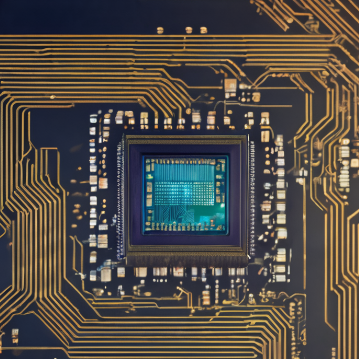
Key Considerations in PMIC Selection
1. Voltage and Current Requirements: Understanding the specific voltage and current requirements of the target system is crucial. Analyzing the power consumption profile of different components and identifying peak power demands will help in selecting a PMIC that can handle the load effectively.
2. Efficiency and Power Loss: Power efficiency is a critical factor in modern electronic designs. Evaluating the efficiency ratings of PMICs under different operating conditions and load scenarios will aid in selecting a PMIC that minimizes power losses and maximizes overall system efficiency.
3. Thermal Management: Heat dissipation is a significant concern in power management. PMICs can generate considerable heat, and proper thermal management is essential for maintaining performance and reliability. Evaluating the thermal characteristics of PMICs, such as thermal resistance and thermal shutdown features, ensures efficient heat dissipation and prevents thermal-related issues.
4. Integration and System Compatibility: PMICs need to be compatible with the target system's architecture and requirements. Assessing the interfaces, communication protocols, and control features of the PMICs and ensuring compatibility with the system's microcontroller or processor is crucial for seamless integration.
5. Protection Features: PMICs should incorporate comprehensive protection features to safeguard the system and its components. Overvoltage protection, undervoltage lockout, overcurrent protection, and short-circuit protection are some essential features to look for in a PMIC.
Design Considerations
1. Layout and PCB Design: Proper PCB layout and design are critical for optimal performance and noise reduction. Careful placement of PMICs, decoupling capacitors, and other related components, along with proper routing and grounding techniques, can minimize noise and improve signal integrity.
2. Electromagnetic Compatibility (EMC): Ensuring EMC compliance is important for preventing electromagnetic interference (EMI) issues. Proper grounding, shielding, and filtering techniques during the design phase help mitigate EMI and maintain signal integrity.
3. Power Sequencing and Control: Sequencing the power-up and power-down of various system components is crucial for preventing issues like latch-up, inrush current, and voltage spikes. Implementing proper power sequencing and control mechanisms using PMICs ensures reliable operation and avoids potential damage to components.
4. Battery Charging and Management: If the system incorporates a battery, selecting a PMIC with advanced battery charging and management capabilities is essential. Features such as charging algorithms, thermal regulation, and state-of-charge monitoring help prolong battery life and ensure safe operation.
5. System Monitoring and Diagnostics: PMICs with built-in monitoring and diagnostic features provide valuable insights into the system's power consumption, temperature, and fault conditions. Integrating these features enables proactive system monitoring, fault detection, and troubleshooting.
PMIC Current situation and challenges
Challenges in PMIC Design:
1. Efficiency and Power Loss: PMIC design faces challenges related to efficiency and power loss. Factors contributing to these challenges include losses during on-off switching transitions, the resistance of components, and power consumption by the PMIC [[1]](https://resources.pcb.cadence.com/blog/2023-challenges-in-power-management-ic-pmic-design).
2. Thermal Management: PMICs generate heat during the power regulation, conversion, and distribution process. Proper thermal management is essential to prevent reduced efficiency and reliability issues. Challenges in thermal management include localized heat generation, limited space for thermal solutions, and thermal interaction with other components [[1]](https://resources.pcb.cadence.com/blog/2023-challenges-in-power-management-ic-pmic-design).
3. Power Integrity and Noise: Maintaining stable power supply voltage and minimizing noise is critical in PMIC design. Challenges in power integrity and noise include varying current demands, switching action of the PMIC, parasitic elements, poor layout and routing, high-frequency switching, sudden load changes, and temperature variations [[1]](https://resources.pcb.cadence.com/blog/2023-challenges-in-power-management-ic-pmic-design).
Solutions to PMIC Design Challenges:
1. Efficiency and Power Loss: To address efficiency and power loss challenges, designers can use high-efficiency topologies and low-resistance components. These solutions can lead to improved power conversion and reduced power loss [[1]](https://resources.pcb.cadence.com/blog/2023-challenges-in-power-management-ic-pmic-design).
2. Thermal Management: Solutions for thermal management challenges include employing thermal dissipation techniques and optimizing component placement. These approaches enhance thermal dissipation and reduce thermal-induced power losses [[1]](https://resources.pcb.cadence.com/blog/2023-challenges-in-power-management-ic-pmic-design).
3. Power Integrity and Noise: To mitigate power integrity and noise challenges, designers can incorporate decoupling capacitors, filtering techniques, and proper grounding. These measures help ensure reliable power integrity and minimize noise interference [[1]](https://resources.pcb.cadence.com/blog/2023-challenges-in-power-management-ic-pmic-design).
---
Resource:
1. [Challenges in Power Management IC (PMIC) Design | Advanced PCB Design Blog | Cadence](https://resources.pcb.cadence.com/blog/2023-challenges-in-power-management-ic-pmic-design)
2. [Power Management IC (PMIC) Market Analysis Report 2024-2032 | 119 Pages Report](https://www.linkedin.com/pulse/power-management-ic-pmic-market-analysis-report-2024-2032-dlatc)
3. [Emerging Trends in the 2031 Power Management IC (PMIC) Market: Illuminating Tomorrow](https://www.linkedin.com/pulse/emerging-trends-2031-power-management-ic-pmic-4xa9f)

Frequently Asked Questions
What does PMIC stand for?
How to choose PMIC?
What are the characteristics of a PMIC?
What are the different types of PMICs?
How to design a PMIC?

Related Articles
-
1,000+Daily Order Quantity
-
2,500,000+Alternative Parts
-
2,200+Worldwide Manufacturers
-
10,000 ㎡In-stock Warehouse






